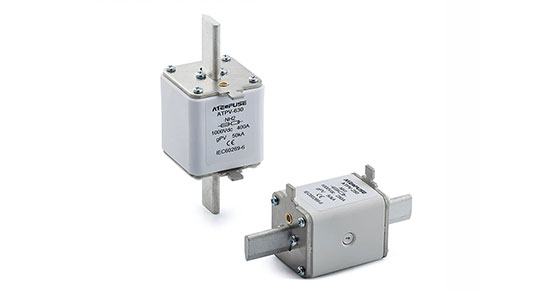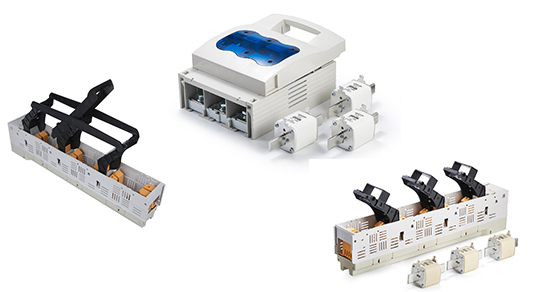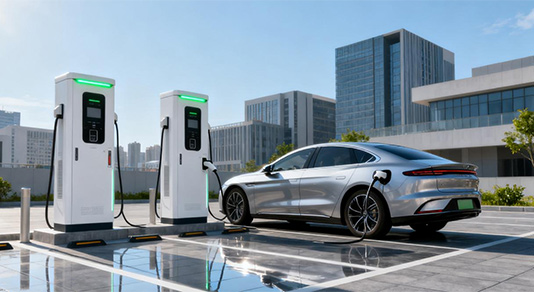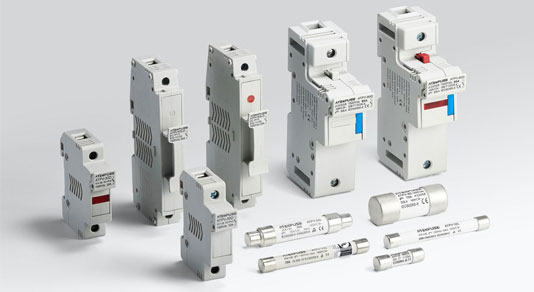The Deep Link Between Solar PV and Energy Storage — A Detailed Guide & Product Overview | AITE Fuse
Source: www.aitefuse.com
Introduction — why solar + storage needs exceptional protection
The combination of solar photovoltaic (PV) generation and battery energy storage systems (BESS) unlocks flexibility, resilience, and better economics for virtually all scales of renewable projects. But this combination also increases system complexity — more DC strings, higher voltages (up to 1500V DC in modern utility systems), bidirectional power flows, and new fault modes (e.g., DC arcs during disconnect).
Electrical protection is not an afterthought — it’s the backbone that keeps projects safe, compliant, and maintainable. This extended article explains the technical relationship between PV and storage, then dives deep into the protection components AITE Fuse supplies, practical selection & installation guidance, and operational best practices.
1. How PV and Storage work together (technical overview)
•PV arrays produce DC power from strings of panels. Each string may have an independent Maximum Power Point (MPPT) and output.
•Combiner boxes aggregate multiple PV strings into fewer cable runs to the inverter or battery inverter, providing branch protection and monitoring.
•Battery systems store DC (or AC-converted) energy and can supply loads, grid services, or charge/discharge on schedule.
•When integrated, PV can charge batteries during peak sun; the BESS discharges during night or peak demand — smoothing output, providing ramp control, and enabling grid services (frequency/voltage support, arbitrage, VPP participation).
Electrical interfaces to protect: PV string to combiner box; combiner box to inverter/BESS; DC link between inverter and battery; BESS internal packs and modules; DC disconnects; and any bidirectional power electronics.
2. Key protection elements and where they belong
•PV combiner box — string aggregation, per-string DC fuses, string monitoring, surge protection (SPD), DC disconnects, and sometimes integrated string-level power optimizers or rapid shutdown.
•DC fuses (PV fuses / BESS fuses) — protect strings, modules, battery packs, and DC buses from overcurrent and short-circuit. They must be rated for DC voltage (no arc quenching from AC mains), and for the system’s maximum prospective short-circuit current.
•Fuse holders / fuse bases — mechanical and electrical interface; must support PV-rated fuses, secure mounting in combiner boxes, and simple replacement.
•Surge Protection Devices (SPD) — protect against lightning and surge. Often coordinated with fuses to ensure survivability.
•DC isolators / load-break switches — for safe maintenance and nattural isolation; must be specified for DC voltage and continuous current.
•Monitoring & string diagnostics — early fault detection reduces downtime and prevents cascade failures.
3. AITE Fuse product portfolio — detailed descriptions
Below are the primary AITE Fuse product families, typical specifications, and application notes designed specifically for PV + BESS environments.
3.1 1500V DC Solar Fuse Links (22×58mm and variants)
Description: High-voltage PV fuse links engineered for string-level protection in modern utility-scale and commercial PV systems (including 1500V systems).
Typical features & specs:
•Rated voltage: up to 1500V DC (model dependent)
•Form factor: 22×58 mm (standard PV fuse link) and other sizes available on request
•Current ratings: commonly available from 10 A up to 250 A (custom options up to 400 A on request)
•Fast and selective blowing characteristics to protect downstream equipment while minimizing nuisance trips
•Advanced arc-extinguishing materials to ensure safe DC interruption and reduced arcing time
Applications: PV combiner boxes, inverter DC input protection, string protection on utility and C&I installations.
3.2 NH-Series DC Fuses (NH1 / NH2 types for higher currents)
Description: NH fuse types for higher current DC applications, often used for battery systems and DC distribution where larger currents must be interrupted reliably.
Typical features:
•Suited for DC battery bus protection and large combiner inputs
•High breaking capacity and robust thermal/mechanical design
•Mounting compatibility with standard NH fuse bases for easy field replacement
Applications: BESS DC bus protection, medium-voltage DC cabinets, industrial DC lines.
3.3 DC Fuse Holders & PV Fuse Bases
Description: Rugged fuse holders designed for PV combiner boxes and DC distribution panels.
Features:
•Standardized dimensions for 22×58 and NH series fuses
•Easy-to-operate replacement mechanisms (tool-less options available)
•Clear labeling and polarity markings for safe maintenance
•IP-rated designs for outdoor combiner box installations
Applications: PV combiner boxes, BESS cabinets, string junction boxes.
3.4 PV Combiner Box Components & Sub-assemblies
Description: AITE supplies key combiner box components and can deliver pre-assembled combiner boxes on request.
Included parts: DC fuses, fuse holders, SPD modules, DC disconnect switches, string combiner busbars, status indicators, and optional string monitoring units.
Customization: enclosure size, ingress protection (IP65/IP66), cable gland selection, and OEM labeling.
3.5 BESS-Specific Fuses & Customized Solutions
Description: Battery systems have unique fault characteristics (bi-directional current, high fault energy). AITE offers BESS-grade fuses with tailored time-current characteristics.
Options: selective coordination with inverter protection, high I²t ratings to withstand inrush and differential charging events, and custom base designs for rack-mounted battery modules.
4. Certifications & quality assurance
AITE Fuse products are manufactured and tested to meet international standards appropriate for renewable and industrial projects. Typical certifications & QA measures include:
•IEC standards for fuse performance and safety
•UL listings where required for North American projects
•TÜV/CE certification for European compliance
•Routine electrical testing: dielectric strength, breaking capacity, temperature rise, endurance under DC load
•Traceability & batch testing for quality control
(If you require copies of specific certificates for project procurement, AITE can provide test reports and certification documents on request.)
5. How to choose the right fuse for your PV + BESS project — selection guide
Step 1 — establish system electrical parameters
•Maximum system voltage (e.g., 1000V DC, 1500V DC)
•Maximum string current under worst-case irradiation
•Prospective short-circuit current at the fuse location
•Battery pack/module charge/discharge profiles (for BESS)
Step 2 — match fuse voltage & current ratings
•Fuse voltage rating must be ≥ system maximum DC voltage.
•Choose a fuse current rating that is ≥ maximum continuous operating current but less than the cable/equipment fault tolerance to ensure protection.
Step 3 — consider breaking capacity and selectivity
•Breaking capacity must exceed the prospective short-circuit current.
•Use downstream selective coordination (faster upstream fuses or time-delay types) to prevent unnecessary upstream trips.
Step 4 — environmental & mechanical requirements
•Outdoor vs indoor installation (IP rating)
•Vibration, temperature ranges, and UV exposure for combiner boxes
•Ease of replacement & local serviceability
Step 5 — consult AITE Fuse engineering support
For complex BESS topologies and VPP use cases, AITE provides time-current coordination studies and custom fuse solutions.
6. Installation & maintenance best practices
•Correct polarity & clear labeling: Mark positive/negative and string IDs to avoid accidental shorts.
•Torque & mounting: Follow recommended torque values for busbars and cable lugs to prevent overheating.
•Regular inspection: Visual checks for discoloration, melting, or corrosion. Replace suspect fuses immediately.
•String testing: Periodic IV curve scanning and insulation resistance tests catch degradation early.
•Spare parts: Keep a kit of spare fuse links and holders in site inventory for rapid replacement.
•Training: Ensure maintenance crews are trained on DC arc hazards — use DC-capable PPE and lockout/tagout procedures.
7. Typical project use-cases & examples
•Utility-scale PV farm (1500V) — 44 strings per combiner box; each string protected by a 22×58 1500V DC fuse; central inverters with coordinated upstream NH fuses for DC bus protection.
•Commercial rooftop + BESS — per-string DC fuses in combiner box, BESS module fuses at rack level, and monitored fuse positions for rapid fault isolation.
•EV charging hub with PV + storage — PV combiner boxes feed inverters; BESS manages peak demand; selective fuse coordination prevents whole-site trips during a single equipment fault.
8. Frequently Asked Questions (FAQs)
Q: Can the same fuse be used for both PV string protection and BESS module protection?
A: Not always. PV strings and battery modules have different fault characteristics. PV fuses are optimized for DC arcs from solar strings; BESS fuses often need different time-current profiles and higher I²t withstands. AITE supplies models tailored to each application.
Q: What’s the lead time for customized fuse solutions?
A: Lead times vary by order size and customization level. AITE offers standard product lines with short lead times and can provide expedited production for critical projects — contact sales for specific timing.
Q: Do you provide technical coordination studies?
A: Yes. AITE’s engineering team can perform time-current coordination, recommended fuse sizing, and combiner box layouts for complex projects.
9. Why choose AITE Fuse — our differentiators
•PV-specialized designs: Products engineered specifically for DC photovoltaic and energy storage environments (arc-resistant, high-voltage rated).
•Flexible product range: From modular fuse holders to high-voltage 22×58 PV fuses and NH-series high-current fuses.
•Global standards & documentation: IEC, UL, TÜV/CE compliance and full test reports available for procurement.
•Customization & engineering support: We work with EPCs and integrators on fuse coordination and combiner box BOMs.
•After-sales & spares: Local stocking partners and responsive spare parts support to minimize downtime.
10. Next steps & contact (call to action)
If you are designing or specifying a PV, BESS, or hybrid PV + storage project, AITE Fuse can help with:
•Product selection (PV fuse links, NH fuses, fuse holders)
•Combiner box component kits and pre-assemblies
•Coordination studies and technical documentation for tender packages
•Sample supply and project quotations
Visit our product pages and contact us: https://www.aitefuse.com/contact-us
Prefer direct contact? Ask me to draft an email or an RFQ template you can send to procurement — I’ll prepare it with product SKUs, spec sheets, and compliance statements ready to paste into your tender.





